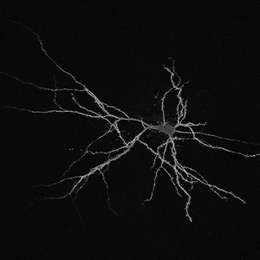'Round-the-clock' lifestyle can disrupt metabolism, brain and behavior

(PhysOrg.com) -- In Civilization and Its Discontents, Sigmund Freud argued that modern society was hard on human psychology, forcing people to get along in unnaturally close quarters. Now newly published research from The Rockefeller University points out a different discontent in the developed world, namely, the disruption of our natural sleep cycles, thanks to the ubiquity of electric lighting. Experiments on mice, published this month in Proceedings of the National Academy of Sciences, found that throwing off their evolutionarily ancient circadian rhythms by artificially altering the length of their days has a substantial impact on the body and the brain. The work suggests that our modern round-the-clock lifestyle could disrupt metabolism, interfere with learning and impact behavior in ways that we’re just beginning to understand.
Researchers led by Ilia Karatsoreos, a postdoc in Bruce S. McEwen’s Harold and Margaret Milliken Hatch Laboratory of Neuroendocrinology, housed mice for 10 weeks in 20-hour light-dark cycles, at odds with their natural 24-hour circadian cycle. They found that after six weeks, the disrupted mice got fatter, showed less mental flexibility and were more impulsive than mice kept on their natural schedule. The findings were originally presented at a Society for Neuroscience’s conference in 2009.
Looking ahead, Karatsoreos says, a main goal is to understand how this environmental disruption works at the biochemical level. “We are interested in how the light cycle changes affects ‘clock genes’ — the actual molecular gears of the circadian clock within cells — in different brain regions, particularly the prefrontal cortex, and how this translates to changes in the functioning of the cells in that region.”
At the same time, the researchers are working to understand the changes at the cellular and molecular level of peripheral tissues, especially those involved in metabolism and energy usage, such as the liver and the adipose tissues.
“The circadian system is a ‘web,’ with rhythms at the molecular level driving rhythms at the cellular level, which results in rhythms at the tissue level,” Karatsoreos says. “This can lead to a cascading set of effects throughout the whole organism, and we want to understand how exactly that happens.”
The researchers believe that this cascade may affect how an individual, whether animal or human, responds to additional challenges to the immune or metabolic systems, such as infection or high fat food, both ubiquitous realities of modern life. They are also working on models to understand the impact of different kinds of light-dark shifting such as those experienced by flight crews, shift workers, military personnel and medical residents. “We want to know how different patterns affect the brain and body, and if they share similar mechanisms of action,” says Karatsoreos.
More information: Proceedings of the National Academy of Sciences 108: 1657–1662 (January 25, 2011). Disruption of circadian clocks has ramifications for metabolism, brain, and behavior. Ilia N. et al.


















